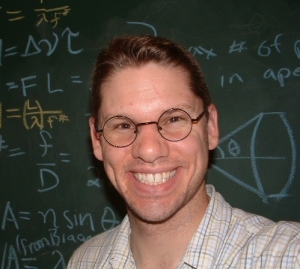Daniel Smalley is a Ph.D candidate at the MIT Media Laboratory where he works on integrated optics for next-generation holographic video displays.
Daniel began experimenting with holography as a middle-school student living in rural Utah. After high school he began a correspondence with Elroy Pearson, then Research Assistant at the MIT Media Lab’s Spatial Imaging Group, that led to his being invited to intern at the lab for the summer. During that internship he became familiar with the Mark II holographic video display, and with Dr. V. Michael Bove of the Object Based Media Group who participated in the creation of the Mark II. As a result of his experiences with Elroy and Dr. Bove at the Media Lab, he became resolved to create his own holovideo device, which desire became the impetus for a variety of related endeavors both at MIT and abroad including his current work with high-bandwidth modulators
Daniel will join the faculty of Brigham Young University’s Electrical and Computer Engineering department this fall.

Congrats on the excellent invention and getting published in Nature as a grad student!
I’ve been wanting a holographic Christmas tree for ten years. No mess no fuss. Will that be possible? Thanks. Randi
Congratulations from Brazil Daniel, good job! I thought your invention amazingly well engineered!
GREAT JOB!
To those who downloaded the early version of thesis, please discard it and use the latest revision. The earlier text had an error in the cleaning recipe.
The descriptions of your dissertation are not so detailed. Is your dissertation or related technical brief available anywhere on the web? I am curious if the result is thin film half-parallax or thick emulsion full parallax. I am guessing the former. Nice to have collapsed Benton’s mechanical wizardy into a silicon wafer! Also is this different from electro-optics leveraged at pen state (for example) due to handling of multiple wavelengths?
Thanks!!
Hi Mike,
I can concede that more detail is needed. We’re currently working to flesh this space out.
To answer your question, as a first approximation, you can think of this as a thin-film horizontal parallax only solution. However, it is more accurate to think of it as an edge-lit hologram. We are currently developing a full-parallax version and we have already demonstrated color filtering which is a thick-film effect. The edge-lit regime allows for an interesting hybrid region of operation.
-d